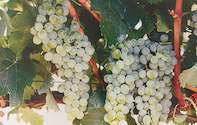Description
Chenel is a white neutral tasting wine grape that is a South African-developed cross developed by Prof Chris Orffer. The parents of Chenel are Chenin Blanc and Ugni Blanc (also called Trebbiano).
Origins
South AfricaOther Names
Chenel is also known as K1, but Weldra is another South African-develop cultivar with the same parentage as Chenel.Production in South Africa
Chenel was released in South African in 1974. Almost 33 ha of Chenel are planted in South Africa (2016) with half (14.5ha) planted in the Robertson region. The oldest vines still in existence were planted in 1979 on the farm Laaiplaas in the Robertson area.Production Regions
Robertson valley produces most Chenel. The Olifants Valley and Northern Cape have plantings of 8ha each, Only 1ha was planted during 2016.Growth and Ripening
It performs well with intensive cultivation such as irrigation and high trellising and produces average (16-20t/ha) to high yields of 23-27t/ha. Due to its resistance to rot, it can be planted on low-lying moist soils in warm regions. A late mid-season ripening cultivar, Chenel is harvested about 4 days to a week after Chenin Blanc.
Leaves and Berries
Chenel’s leaves are medium, dull green and blistered while being round and weakly three-lobed in shape. A late mid-season ripening cultivar, Chenel is harvested about 4 days to a week after Chenin Blanc.
Pests and Diseases
Chenel is very resistant to berry cracking and wet weather and therefore can withstand downy mildew and other grape rots. It is virtually immune to botrytis and sour rot.Use
Chenel produces neutral white wines with good balance. Its neutral taste and natural high acidity (6-8g/l) make Chenel a good wine for brandy or as a blending agent combined with other wines to increase a wine’s acidity.Taste
Wines made from Chenel grapes have a neutral taste and high acidity.By Marinda Louw